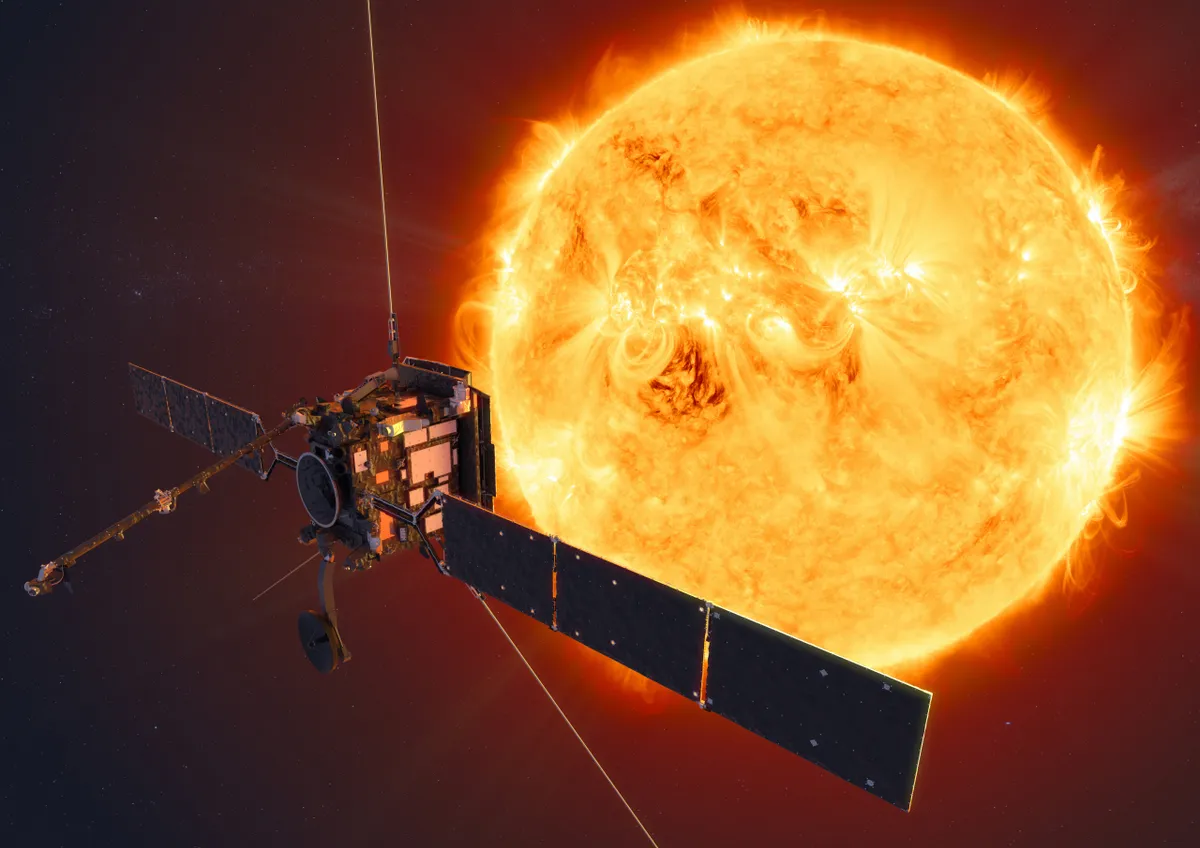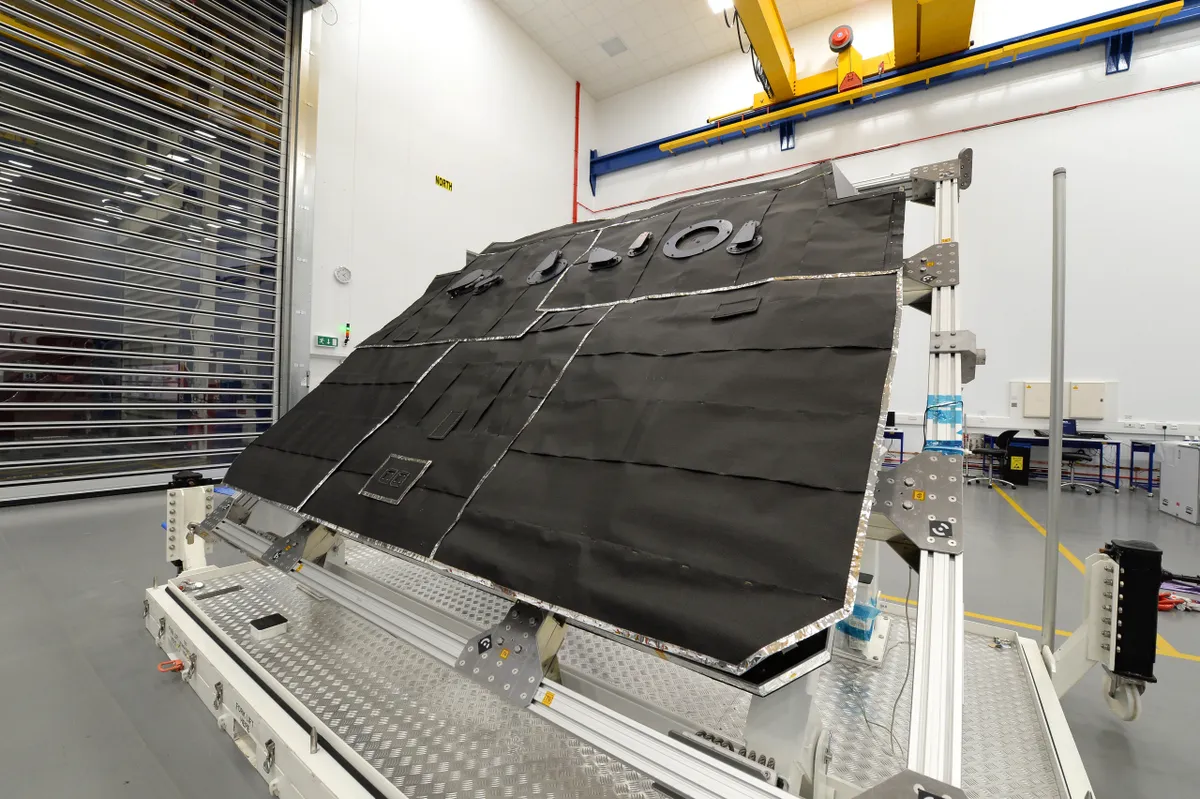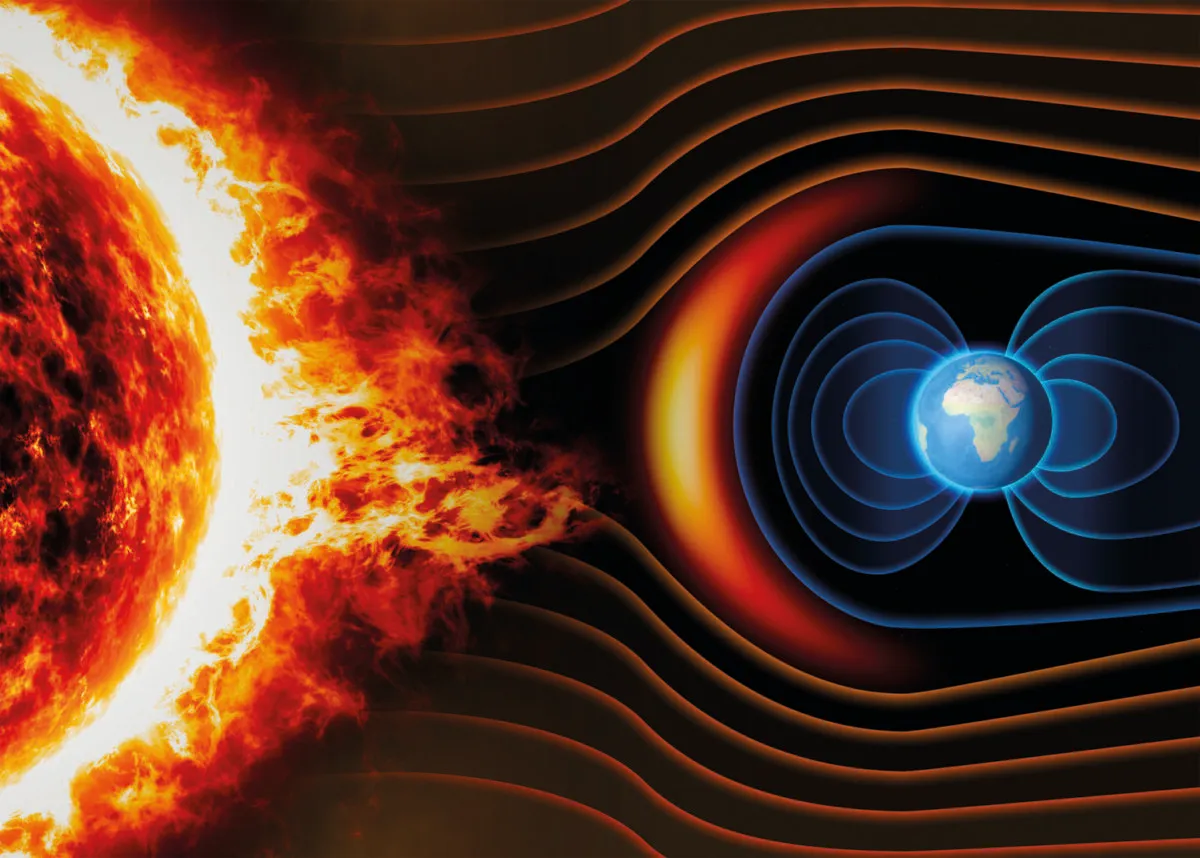Solar Orbiter, the European Space Agency’s new Sun explorer, blasted off from Cape Canaveral in February 2020. It is now heading for an encounter with Venus soon after Christmas.
These encounters (there will be 8 with Venus and 1 with Earth over the 10-year mission) will be instrumental in helping the spacecraft slow down enough to balance against the Sun’s gravity, and crucially also ‘catapult’ the spacecraft out of the ecliptic plane around the Sun (where the planets orbit), allowing the first views of the Sun’s poles.
Read more:
- Interview with solar scientist Prof Richard Harrison
- What will happen when the Sun dies?
- Lucie Green reveals the science of the solar cycle
This unique orbit, combined with a suite of scientific instruments offering remote sensing of the Sun’s surface and measurements of the solar wind particles streaming off the Sun, will give scientists the data they need to understand how energy is transferred from our star into the Solar System.
The spacecraft and instruments have taken over a decade to design and build, going through multiple prototypes and extensive testing before getting to the launch pad.

The competing demands of the instruments and environment have generated challenge after challenge for ESA, which has managed the project, Airbus in Stevenage, which built the spacecraft, and the 10 instrument teams from across Europe and the US.
And there is little room for error. A speck of dust on a camera lens at launch would stay there forever, getting baked onto the lens surface and obscuring the view.
Solar Orbiter will watch features evolve, simultaneously sampling the magnetic field and particle population passing the spacecraft.
A stray magnetic field generated by an instrument circuit or the wrong choice of material, would swamp the detailed measurements of the solar wind.
In the vacuum of space, the heat shield that protects the spacecraft from extreme solar radiation (13 times more intense than that experienced by satellites in Earth orbit) must radiate heat to avoid melting, while at the same time sensors out on the boom in the heat shield’s shadow are in perpetual night time and must be heated to stay warm.

Lift off marks a huge moment in the lives of the people working on this project.
The first hint at what we can expect will come over summer 2020, when the spacecraft reaches approximately 0.5 AU (where 1 AU is the average distance from Earth to the Sun) and scientists get their first chance to try out coordinated measurements sensing the Sun’s surface and measuring what is thrown out into space.
The real excitement will come in spring 2022, with the spacecraft passing within 0.3 AU of the Sun.
At this closest approach, Solar Orbiter will be able to focus on one region of the Sun for about a month, watching features evolve, and simultaneously sampling the magnetic field and particle population passing the spacecraft.

This pristine solar wind, sampled close to the source, combined with eyes on the Sun itself, will provide unprecedented insights into the connection between the Sun and its extended atmosphere that engulfs the whole Solar System.
The Sun is incredibly dynamic: huge explosions driven by magnetic field interactions unleash energetic particle populations capable of harming astronauts, knocking out satellites and causing problems with power grids here on Earth.
Solar Orbiter will deliver new measurements to help us understand how these processes work, and ultimately make better predictions of space weather to keep our astronauts and technology safe.
Read more about the Solar Orbiter mission at ESA's dedicated webpage.
Helen O’Brien is a space instrument engineer at Imperial College, London. This article originally appeared in the April 2020 issue of BBC Sky at Night Magazine.